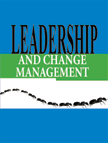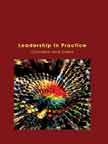Dhirubhai Ambani and Reliance
|
|
ICMR HOME | Case Studies Collection
Case Details:
Case Code : LDEN011
Case Length : 17 Pages
Period : 1958-2002
Pub Date : 2001
Teaching Note :Not Available
Organization : Reliance India
Industry : Varied
Countries : India
To download Dhirubhai Ambani and Reliance case study
(Case Code: LDEN011) click on the button below, and select the case from the list of available cases:

Price:
For delivery in electronic format: Rs. 300;
For delivery through courier (within India): Rs. 300 + Shipping & Handling Charges extra
»
Leadership and Entrepreneurship Case Studies
» Case Studies Collection
» ICMR HOME
» Short Case Studies
» View Detailed Pricing Info
» How To Order This Case
» Business Case Studies
» Area Specific Case Studies
» Industry Wise Case Studies
» Company Wise Case Studies

Please note:
This case study was compiled from published sources, and is intended to be used as a basis for class discussion. It is not intended to illustrate either effective or ineffective handling of a management situation. Nor is it a primary information source.
Chat with us

Please leave your feedback

|
|




<< Previous
Building Reliance
|
Dhirubhai was born on December 28, 1932, to Hirachand Govardhandas Ambani and
Jamunaben Hirachand Ambani. He was the middle of five children, three boys and
two girls (Refer Exhibit II for the Dhirubhai family tree). His father was a
local school teacher in a village called Chorwad in the Junagadh district of
Gujarat.
After his matriculation in 1949, Dhirubhai left for Aden, (now in Yemen) at the
young age of 17. His first job was to fill gas and collect money at a Shell
petrol station, earning Rs 300 a month. Within a few years, he rose to the
position of a sales manager (Refer Exhibit III for Chronology of Events) in the
same company.
|

|
After working for eight years in Aden, Dhirubhai decided to come back to India
and start something on his own. On December 31, 1958, he came back to Mumbai
and started the Reliance Commercial Corporation (RCC) with a borrowed
capital of Rs.15,000.
|
|
RCC was mainly involved in exporting commodities like
ginger, cardamom, pepper, turmeric, and cashewnut. Using his connections
in Aden, he exported a wide range of commodities to Aden. Aden, being a
free port attracted lot of exports. In the mid 1960s, the Government of
India (GoI) introduced an export promotion scheme under which the
earnings from the export of rayon fabrics could be used for the import
of nylon fiber. This attracted Dhirubhai's attention and he decided to
switch from spices to textiles. In 1966, he set up a spinning mill at
Naroda 20 kms from Ahmedabad with borrowed funds of Rs 2,80,000 and
registered it (Reliance Textile Industries) as a powerloom unit with a
paid up capital of Rs 150,000... |
Another program, the High Unit Value Scheme introduced by the
GoI in 1971 gave tremendous boost to Reliance textiles. The scheme allowed the
import of polyester filament yarn against the export of nylon fabrics. RCC was
benefited the most from this scheme and its exports constituted more than 60% of
exports under this scheme. There were rumors that the scheme was solely devised
for Dhirubhai.
Dhirubhai strongly denied the allegations saying that Reliance
cannot be blamed for taking advantage of the scheme 'when others kept their eyes
shut.'He said “I do not consider myself cleverer than my colleagues in the
industry. If there was a very large margin of profit, why did they not take
advantage of it?”1
Excerpts >>
1] Gita
Piramal, Business Maharajas, Penguin Books, 1996
|
|










